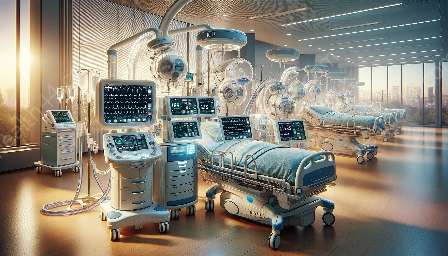Prosthetic limbs play a crucial role in the lives of individuals who have lost a limb due to injury or medical conditions. These devices not only provide physical support but also integrate with life support systems and medical devices to improve the quality of life for the users. In this comprehensive guide, we will delve into the fascinating world of prosthetic limbs, exploring their innovative designs, their compatibility with life support systems, and their impact on medical devices and equipment. Let's embark on a journey to understand the incredible advancements in prosthetic limb technology and the positive influence they have on individuals' lives.
The Evolution of Prosthetic Limbs
Throughout history, prosthetic limbs have evolved from simple wooden constructions to advanced bionic devices that mimic natural movements. The earliest recorded use of prosthetic limbs dates back to ancient Egypt, where simple prostheses made from wood and leather were created to assist amputees. Over the centuries, advancements in materials and technology have revolutionized the design and functionality of prosthetic limbs, making them more lifelike and functional.
Current Innovations in Prosthetic Limb Technology
Today, prosthetic limbs are equipped with cutting-edge technologies such as microprocessors, sensors, and advanced materials, enabling users to regain a significant level of mobility and dexterity. Bionic limbs, for example, use myoelectric sensors to detect muscle movements and translate them into natural, coordinated motions. This level of innovation has transformed the functionality of prosthetic limbs, allowing users to perform complex tasks and activities with greater ease.
Integration with Life Support Systems
Prosthetic limbs are designed to seamlessly integrate with life support systems, such as ventilators, oxygen concentrators, and cardiac assist devices. This compatibility ensures that individuals with prosthetic limbs can receive the necessary support and care to maintain their overall health and well-being. Advanced prosthetic limb designs are created with the understanding of the importance of compatibility with life support systems, allowing users to lead fulfilling and independent lives.
Impact on Medical Devices and Equipment
Prosthetic limbs also influence the design and development of medical devices and equipment. The need for lightweight, durable, and biocompatible materials in prosthetic limbs has driven advancements in material science, benefiting a wide range of medical devices. Furthermore, the integration of sensors and wireless communication in prosthetic limbs has paved the way for similar technologies to be incorporated into medical devices, enhancing patient monitoring and treatment efficacy.
The Human Experience with Prosthetic Limbs
Beyond the technological advancements, the impact of prosthetic limbs on individuals' lives is profound. These devices provide users with the ability to regain their mobility, independence, and confidence, enabling them to actively participate in various activities and pursuits. The emotional and psychological benefits of prosthetic limbs cannot be understated, as they empower individuals to embrace life with courage and resilience.
Challenges and Future Developments
While prosthetic limb technology has made remarkable strides, challenges such as cost, accessibility, and customization remain. However, ongoing research and development are focused on addressing these challenges, with a commitment to making advanced prosthetic limbs more accessible and tailored to individual needs. Future developments may include enhanced sensory feedback and neural integration, further blurring the line between biological and bionic limbs.
Conclusion
Prosthetic limbs represent a fusion of human resilience and technological innovation, profoundly impacting the lives of individuals who use them. Their compatibility with life support systems and influence on medical devices and equipment underscore their far-reaching significance in the field of healthcare and engineering. As we continue to witness groundbreaking advancements, the future holds the promise of even greater mobility and independence for individuals with prosthetic limbs.


